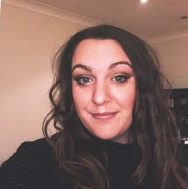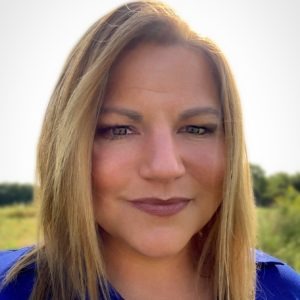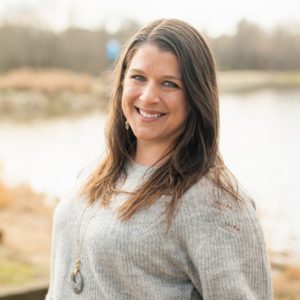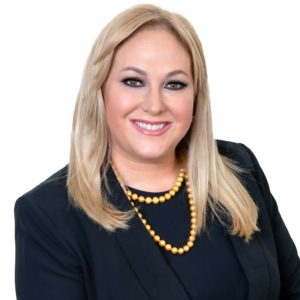Creating a Landing Page for Your Senior Care Facility: Best Practices

Haley Carpenter, senior customer experience strategist, Speero
A landing page is an essential element of a marketing funnel, and the quality of a landing page can drive or decrease conversions.
Whether you’re revisiting your senior care facility’s marketing funnel to make it more effective or need to revise the funnel’s messaging in light of the pandemic, you can improve your landing page’s performance by following these best practices.
Elements of a Good Landing Page
A good landing page will help people to find your facility on Google, and it will also persuade them to get in touch with you, explains Haley Carpenter, senior customer experience strategist at Speero. “A good landing page should be hyper-focused based on search queries or previous interactions with your website or paid ads, rather than sending people to your homepage which is generalized and thus not as persuasive or relevant.
“It’s vital to bear in mind that Google ranks web pages – not websites – so each landing page you have is an opportunity to really optimize that page for the service a potential customer may be looking for,” notes Charlotte Sheridan, director of The Small Biz Expert.
Jessica Vionas-Singer, director of inbound marketing at SmartBug Media, explains that a landing page is a valuable tool that can help facilities to determine where a person is in the buying journey. “Used correctly, senior care facilities can implement landing pages to generate leads—people who “raise their hand” as interested in senior living,” she says. “Senior care facilities can determine where each person is in the buying journey based on what type of content the person is downloading, whether that be just starting to do some research (an e-book on the different types of senior living, for example) or whether they’re ready to take a tour (such as floor plans).”
Best Practices When Developing a Landing Page

Charlotte Sheridan, director, The Small Biz Expert
Following best practices can help increase a landing page’s effectiveness. Carpenter suggests the following tips when developing a landing page:
- Use one call-to-action (CTA) across the page. Each landing page should be focused on getting a user to complete one specific action. E.g., fill in a form, or book a visit, or download a guide.
- If paid ads lead to the landing page, make sure to use copy from the ad on the landing page. This helps create a consistent experience for the user and makes them think they are “in the right place.”
- State your value proposition at the top of the page with a call-to-action button. Conduct research via questionnaires or interviews to understand what residents/customers perceive as being your key selling points, rather than what you think they are.
- Add social proof to the page to increase credibility. This is really important if you are a relatively unknown business. e.g. add residents’ testimonials. If you have awards and accolades, add those as well.
- Restate your offer with the call-to-action button at the bottom of the page. Don’t be afraid to reiterate such messaging throughout the page, especially if the page is long with multiple sections.
- Don’t use stock photos. Ever. Use real-life photos.
Vionas-Singer suggests that facilities focus on keeping landing pages clean, focused, and functional:
- Have one thing you want the person to do; don’t have links or buttons other than that.
- Keep the description of the offer (i.e., copy) short.
- Use bullet points and short paragraphs to break up the text.
- Accurately describe what the person will get upon filling out the form.
- Have as few fields on the form as possible.
- Keep the mobile experience in mind.
- Upon filling out the form, redirect the visitor to a thank you page where they can download the content.
- Send a follow up message, thanking them for their interest with a link to the content as well.
Developing Materials and Messaging

Jessica Vionas-Singer, director, inbound marketing, SmartBug Media
A piece of gated content, whether that’s an e-book, a guide, or another piece of value – is what drives potential customers to complete the fields in a landing page.
Vionas-Singer suggests that senior care facilities create guides, e-books, checklists, FAQs, brochures, webinars, or video recordings. “For a senior living facility just getting started with a digital marketing program, try surveying residents who recently moved in about what was on their mind (and their families’ mind) during the process of selecting a senior living facility. A guide that answers those questions is a great place to start!” she says.
Sheridan suggests that facilities think beyond brochures and consider what will really help their potential audience. Checklists for comparing care facilities, how-to-guides, and webinars and live virtual events are just a few ideas. “This type of content can tick several boxes for your potential residents and their families – it shows your expertise, it gives them something of value, and it establishes you as an organization who provides support, not just a hard sell.”
In addition to creating a valuable piece of content, it’s also important to focus on your messaging, particularly during the pandemic. Sheridan explains that it’s essential to think about your audience, and you may be trying to speak to both the person requiring care and their loved ones. “Senior care is sadly still a bit of a scary prospect to many, so you need to make sure that your landing page doesn’t just talk about your facilities, but think about how it will make both the elder and the family feel,” Sheridan says. “Use images that promote a safe and nurturing environment. Use language designed to overcome those unusual fears. “
Sheridan also suggests that writing down the questions a facility receives most often from potential residents and their families can help them to create landing page copy that addresses those concerns.
Landing Pages: One Step in the Customer Journey
A landing page is part of an overall lead generation funnel, so it’s important to ensure that those other elements are just as strong as your landing page is. Sheridan notes that facilities can use multiple sources to drive traffic to the landing page, including running ads on major platforms like Google ads. In this case, it’s important to make sure that the messaging is the same throughout the sales funnel. Facilities might also optimize their landing pages for search engines, though this does take time.
Vionas-Singer highlights the importance of proper follow-up after potential customers complete the landing page. “A landing page should be the start of a dialogue, not the end!” she explains. “To effectively make the most of a landing page, think about where the content is in the buyer’s journey to determine what the follow up should be. If the content is for people just starting their research, the most appropriate follow-up may be an email campaign over the course of several weeks (or even months) with additional, helpful content. If the content is about your community, a phone call from the facility may make sense.”
Planning out a landing page – and your entire sales funnel – takes time, and it’s a process that you’ll want to think through carefully. Once you’ve established your landing page, you can always make future edits to test its effectiveness and determine the best version of the page that has the highest conversion rate. A quality landing page can help to generate more leads, giving your facility the chance to engage with families and start to have valuable conversations about senior care.

Paige Cerulli is a contributing writer to i Advance Senior Care.
Related Articles
Topics: Business Marketing Including Social Media and CRM , Featured Articles , Technology & IT











